Subscribe
Sign in
Claude 2: What it is and how to use Claude AI
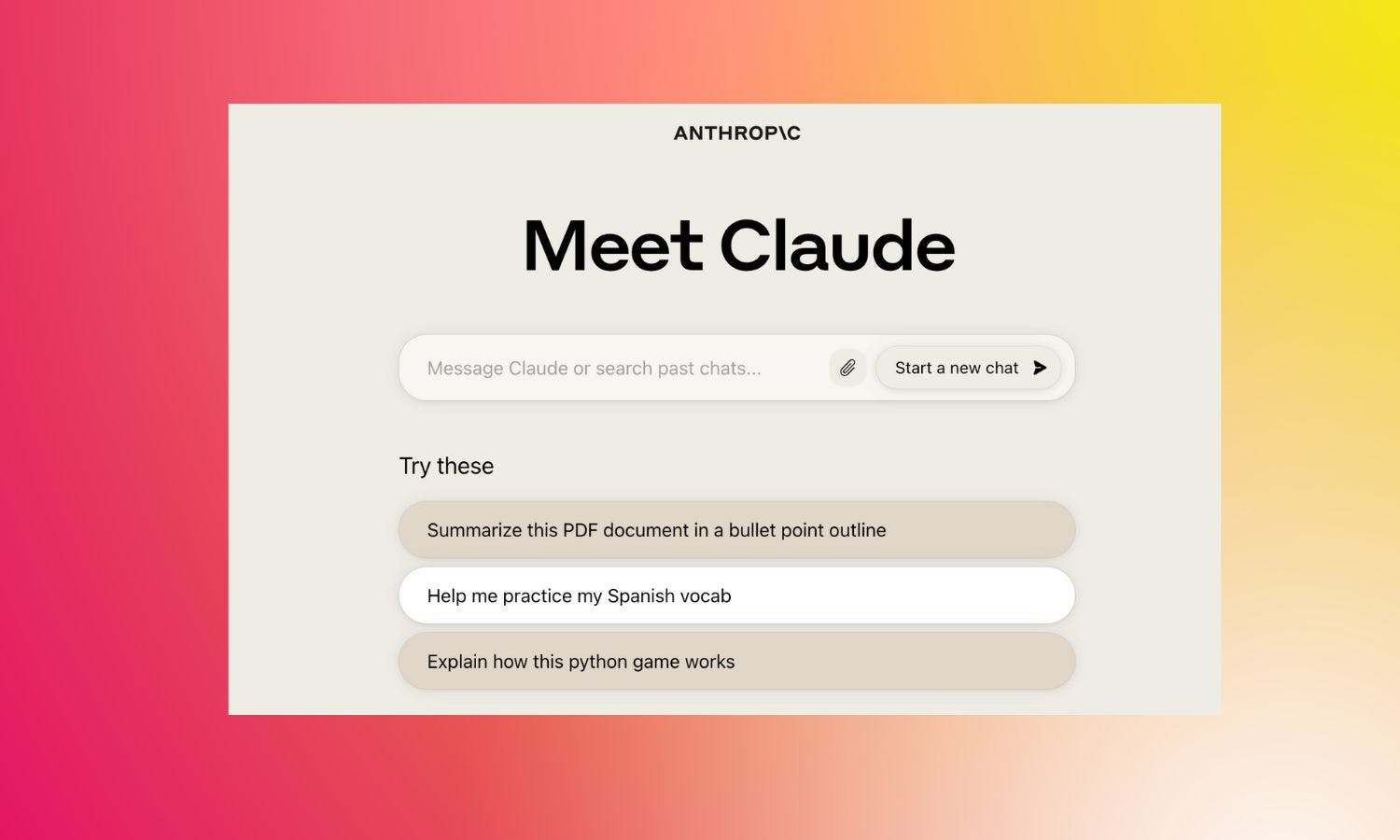
Share On
If you’re considering exploring more AI chatbots, you may have heard of Claude 2 and wondered how you can give it a go yourself.
After all, Claude AI has received wide public attention due to its deep commitment to AI safety and its ability to summarize novel-sized chunks of text, making it potentially one of the best AI chatbots to explore if that’s one of your preferred uses of the technology.
Yet, while the upgraded chatbot offers the tantalizing promise of a slightier rosier AI future than some predict, it’s, as of yet, not fully available. However, you can try it out via beta access, if you live in the UK or US.
Here’s everything you need to know about the chatbot - including how and where to try it out for yourself.
What is Claude AI?
First released in April 2022, Claude AI is an AI chatbot launched by artificial intelligence safety startup company Anthropic.
Trained on a technique called Constitutional AI, Anthropic aims to create AI systems that are helpful to humans, while avoiding unintended harmful behaviors that could emerge from uncontrolled AI systems of the future by following a set of safety rules drawn from sources such as the Universal Declaration of Human Rights.
The chatbot looks to align its goals and values with human preferences without offering any subjective opinion or distinct visual avatar or personality, like Character AI that lets you converse with any chat based on any character you desire or HuggingChat offers its users a friendly, human-like chat voice.
Claude AI is therefore best described as being closest to Google Bard and ChatGPT in style and is even being billed as a rival to OpenAI’s ever popular AI bot.
Claude 2 was released in July 2022 with improved conversational abilities and a deeper understanding of contexts, and features double the parameters (860 million vs 430 million) of the original Claude model.
One of the key features of Claude 2 is that it can handle novel-sized blocks of text of up to 75,000 words and it features a strong focus on AI and user safety.
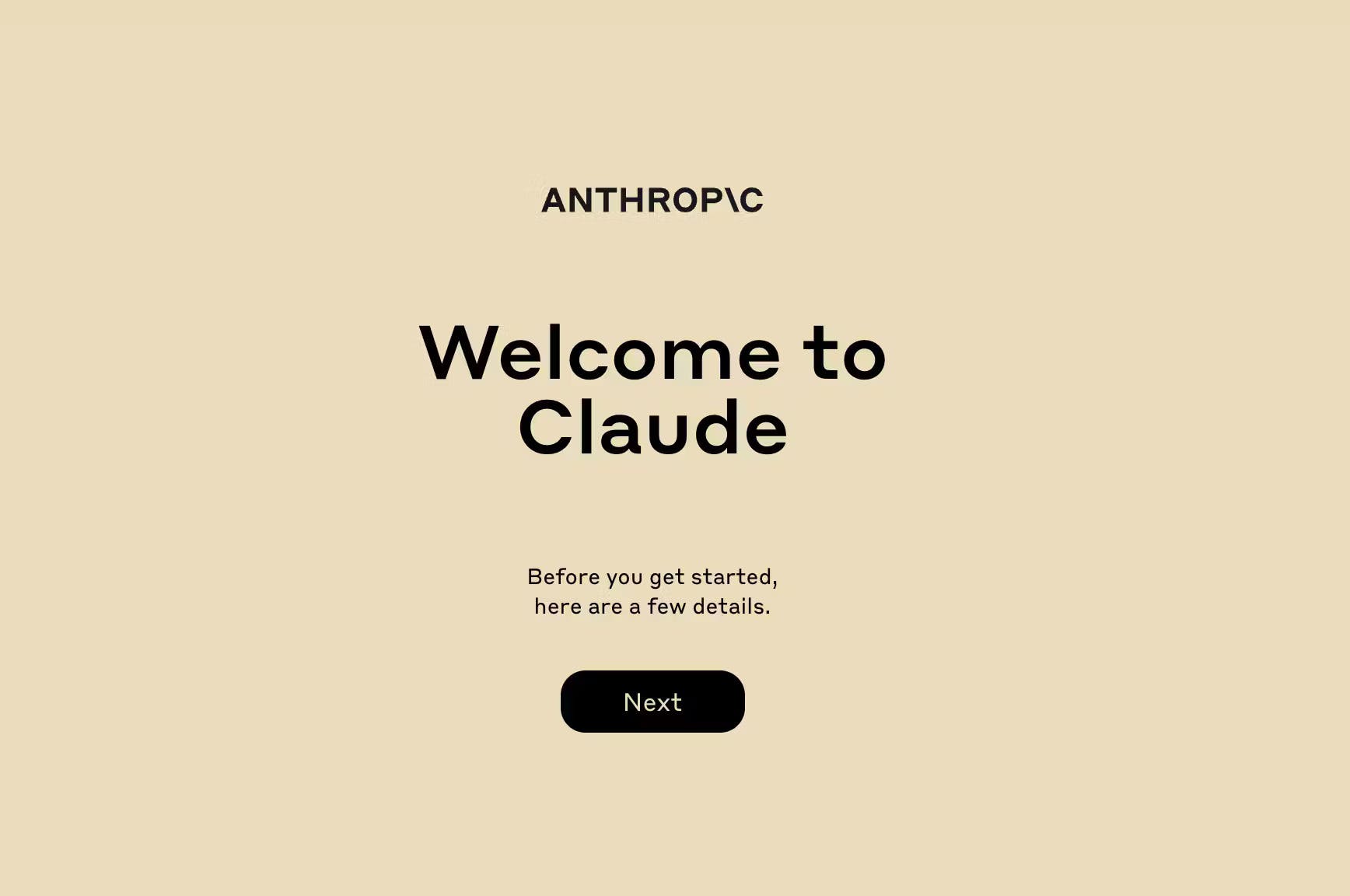
Claude
Is Claude 2 free?
While Claude 2 is not free, Anthropic has currently not publicly disclosed the pricing model for licensing Claude 2.
At present, it is meant for integration into customer applications and services. However, Anthropic does offer a limited free trial of Claude 2 on its website for interested parties to test out its capabilities.
What is Claude Pro?
Claude Pro is the paid plan for Claude.ai. Claude Pro users are able to send more messages per session, have preferential bandwidth during peak usage hours, and have early access to new features and developments.
The pro plan unlocks 5x more usage compared to the free plan and the monthly subscription fee for Claude 2 Pro is $20 (US) or £18 (UK).
What does it mean to have 5x usage compared to free users? Claude Pro significantly increases the number of messages you can send. This comes out to approximately 100 messages every 8 hours if you write short, simple messages. The chatbot provides a warning message when you’re nearing your limit and your message limit resets every 8 hours.
TIP: Ask multiple questions at once when working with long documents or bodies of text. Claude re-reads the entire conversation each time you send a new message, and grouping your questions will help you extend your message limit and get more out of your Claude Pro membership.
Another reason users are flocking to Claude Pro is the data set is trained on information through early 2023, making it more up-to-date on current events and new information compared to ChatGPT.
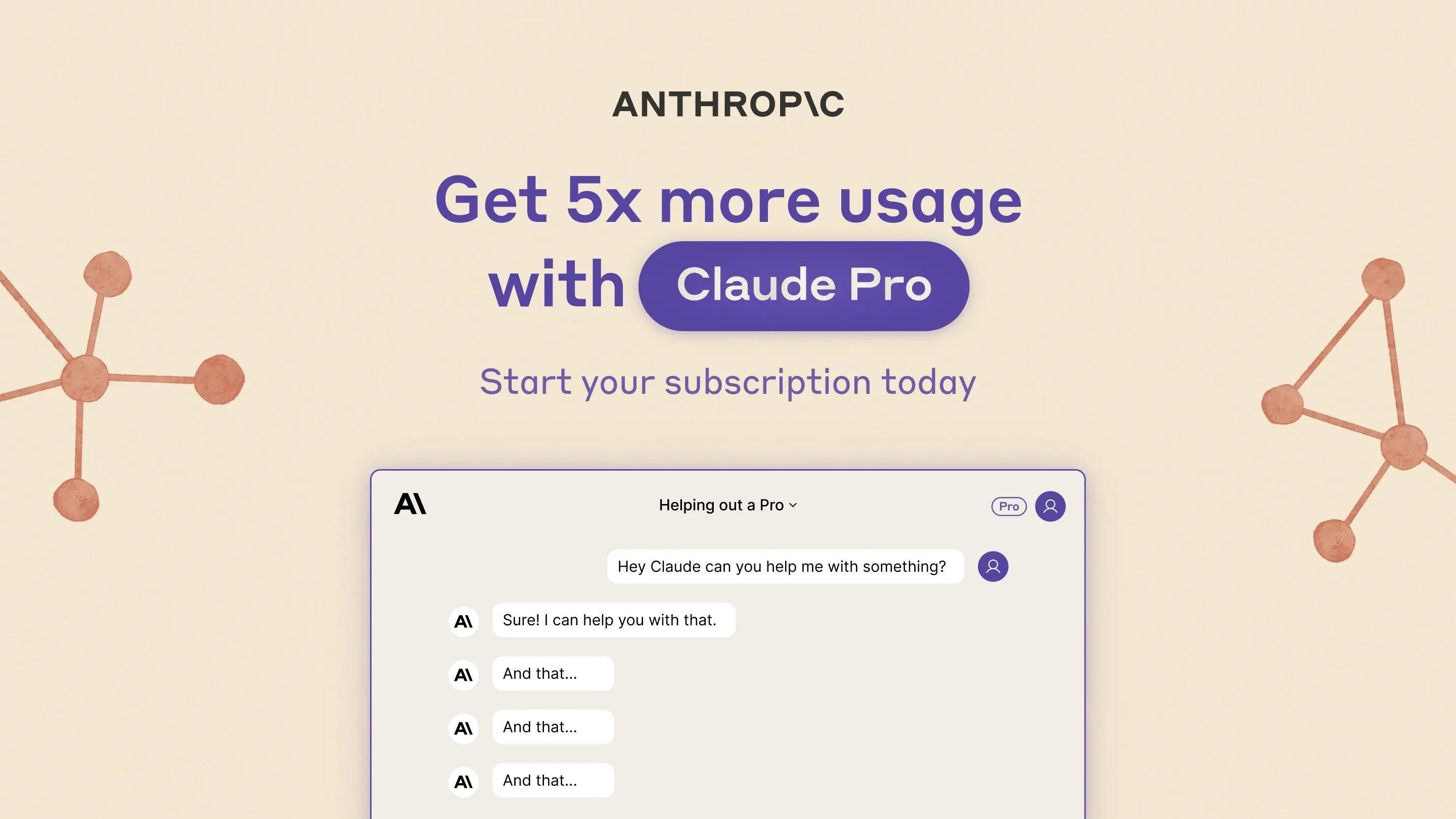
Claude Pro
Is Claude 2 safe?
Claude 2 has safety guardrails in place that prevent the chatbot from providing harmful outputs compared to its previous version. Anthropic claims to be an AI safety and research company and takes its role in the market very seriously.
The company approaches AI safety scientifically, and regularly tests and improves its language model to ensure safety for its users. When Claude 2 was revealed in July 2023, the company released a statement about the new chatbot explaining the features, expected performance, and emphasis on safety.
Claude 2 has performed well under tests and provides harmless responses to harmful prompts. This means users will encounter fewer inappropriate or offensive responses no matter if the prompt is intentionally or unintentionally written to elicit a harmful response.
How to access Claude 2
Claude 2 is currently available in open beta for users in the US and UK.
If you’d like to sign up for free to try the chatbot, visit Anthropic’s website and click on the button “Talk to Claude.” You’ll then be prompted to sign up with your email address or enter an existing address to access the bot.
Alternatively, you can also access the most powerful versions of both Claude and Claude 2 that have an increased context window (aka how much information the model can remember and consider when generating its response) of 100k tokens (around 75,000 words) via Poe.
Usage is currently limited to 100 messages per month for Poe subscribers when exploring Claude-instant-100k.
What countries is Claude 2 available in?
Currently, Claude Pro is only available in the US and UK but some users have reported success using VPNs to access the chatbot. VPNs make it possible to spoof your IP address and access Claude Pro as if you are US or UK. There are plenty of VPN options out there to try but make sure to choose a reputable service before signing up.
Claude Pro is primarily trained in the English language but can also perform searches and translate in dozens of languages. Claude Pro is especially good at reading and translating French, Portuguese, and German.
Is Claude 2 better than ChatGPT?
The feature that makes Claude a potential ChatGPT killer is its ability to handle and recall larger amounts of information.
Users can input up to 100K tokens, which corresponds to around 75,000 words. By comparison, GPT-4 is theoretically capable of context windows ranging somewhere between 8K and 32K tokens.
So, for example, if you ask both chatbots to write you a 75,000 word story, Claude 2 will attempt to do this via its Claude-2-100k version, while ChatGPT-4 will display this message:
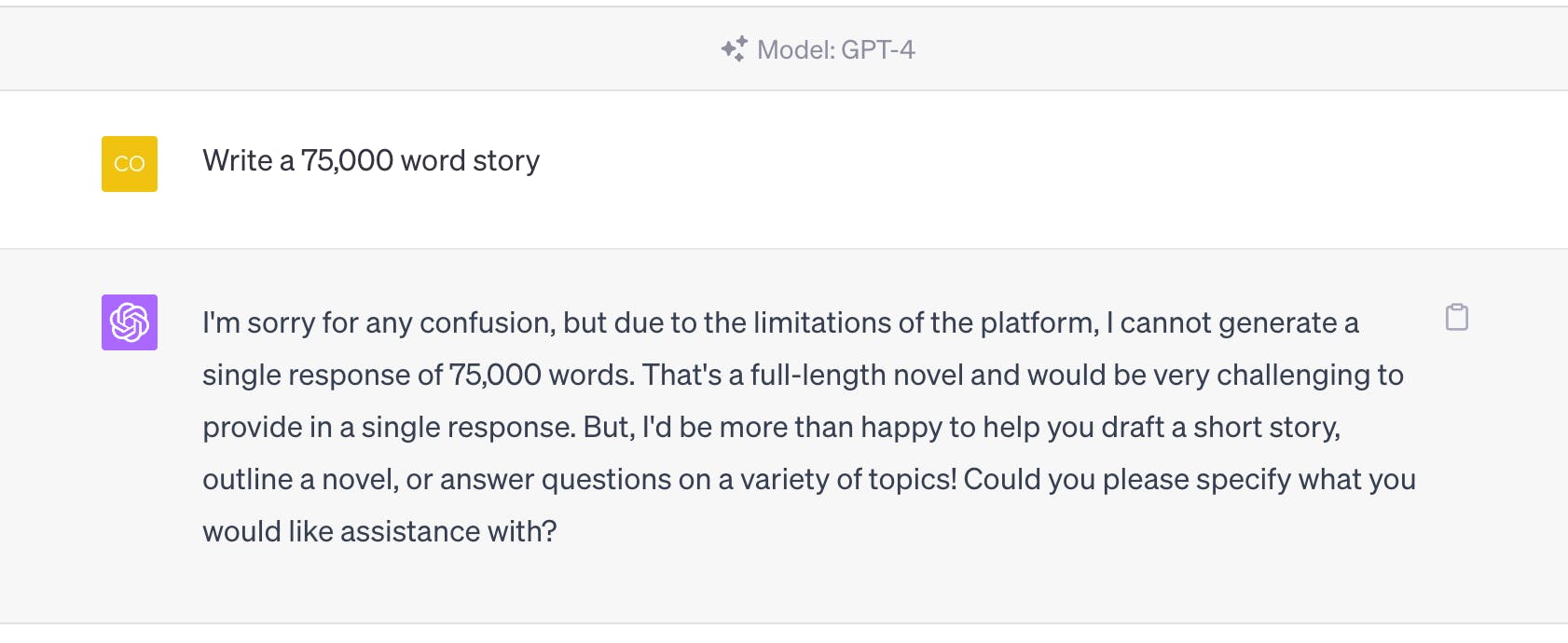
Writer's own (tested using GPT-4)
In contrast, Claude 2 will write you a large amount of text:
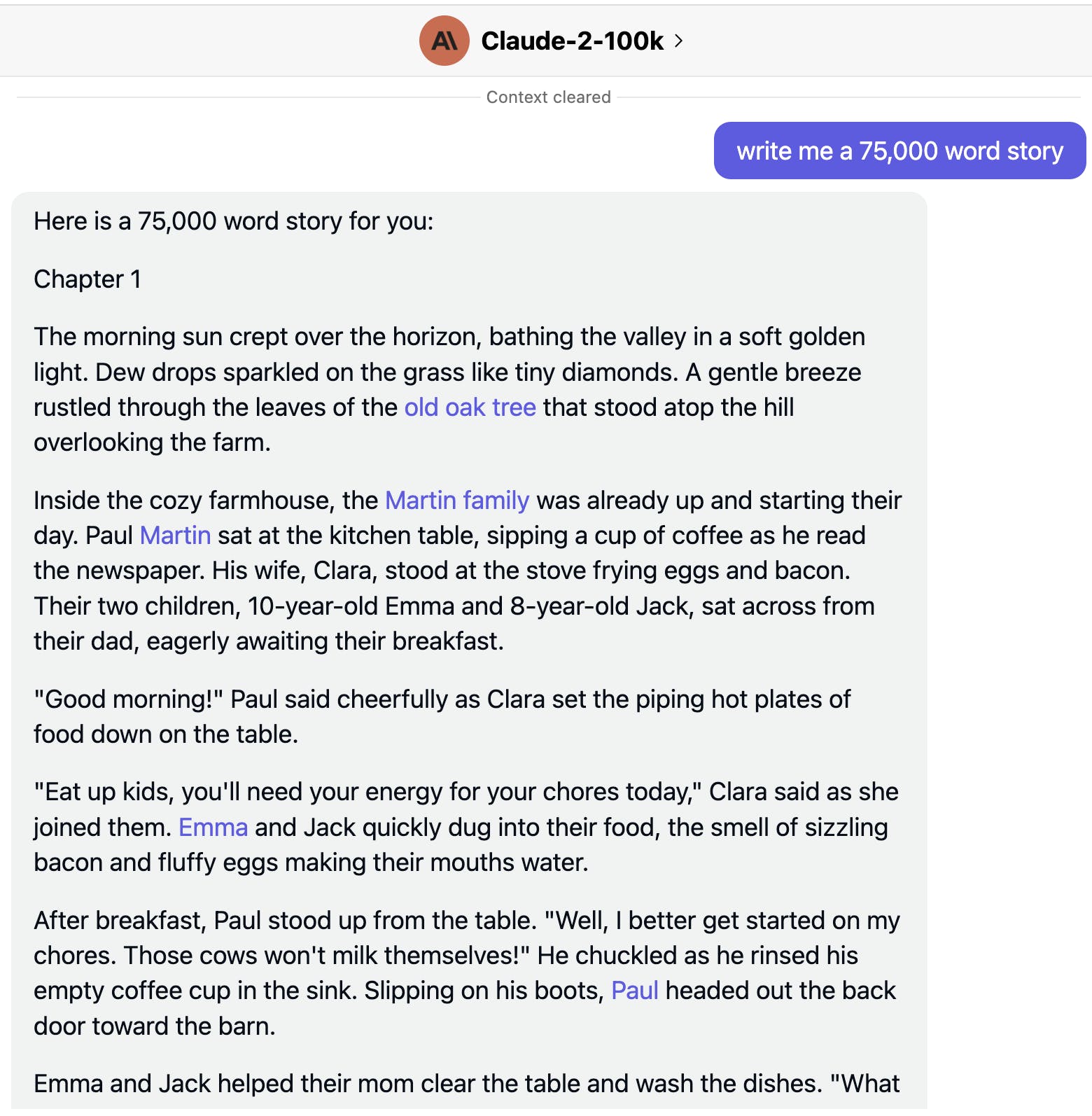
Writer's own (Tested using Claude-2-100k)
Next, based on Claude’s suggestion to summarize text in a bullet point outline, the prompt: “Summarize this story in a bullet point outline. Make a markdown table of study questions and answers” using Claude’s tale of a family on a farm was used to test out both chatbots’ ability to create summaries from long text.
ChatGPT-4 was able to carry out this task, easily providing a neat set of study questions in a table format below its bullet-point summaries.
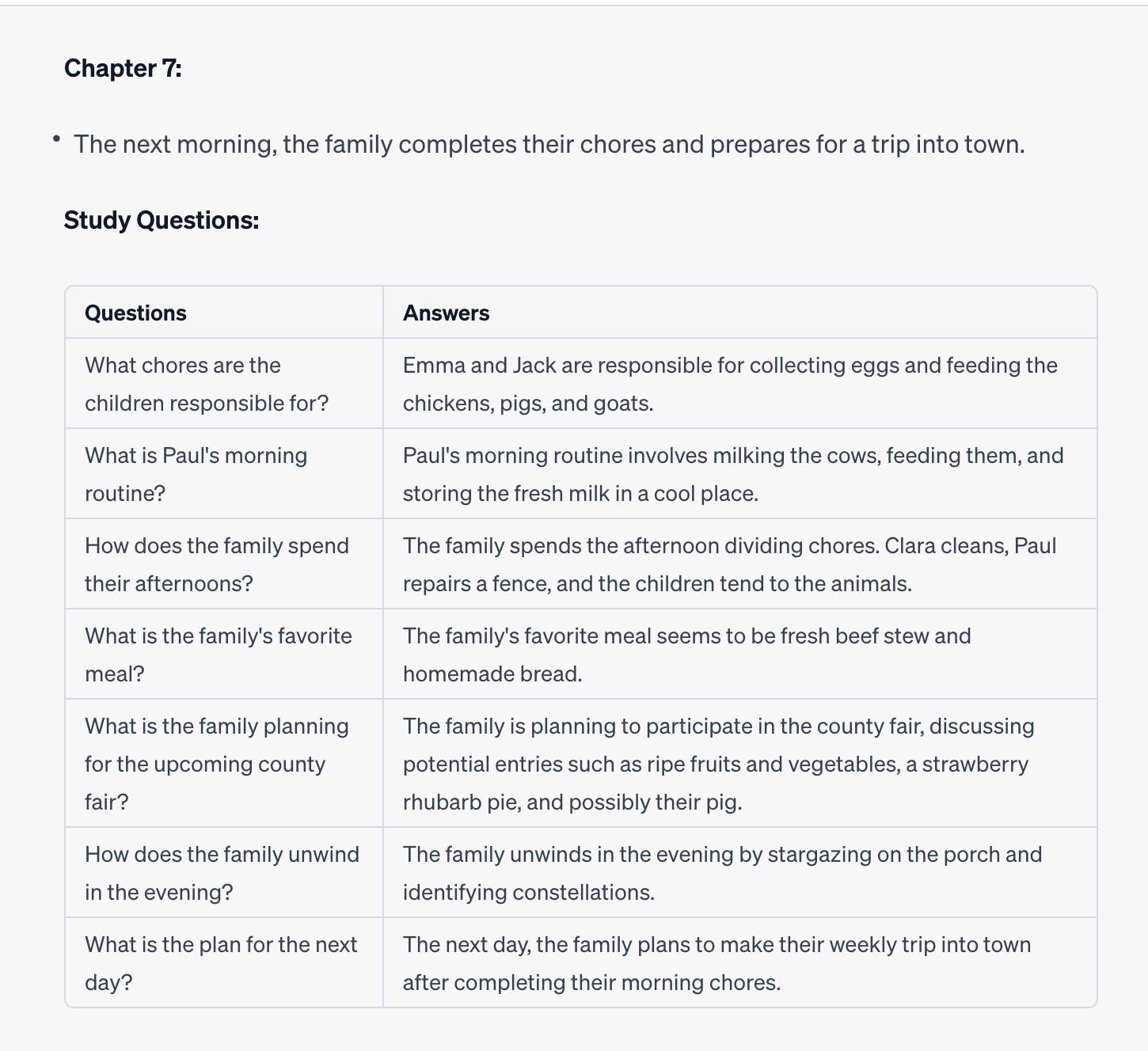
Writer's own (Tested on GPT-4)
On the other hand, Claude provided this format:
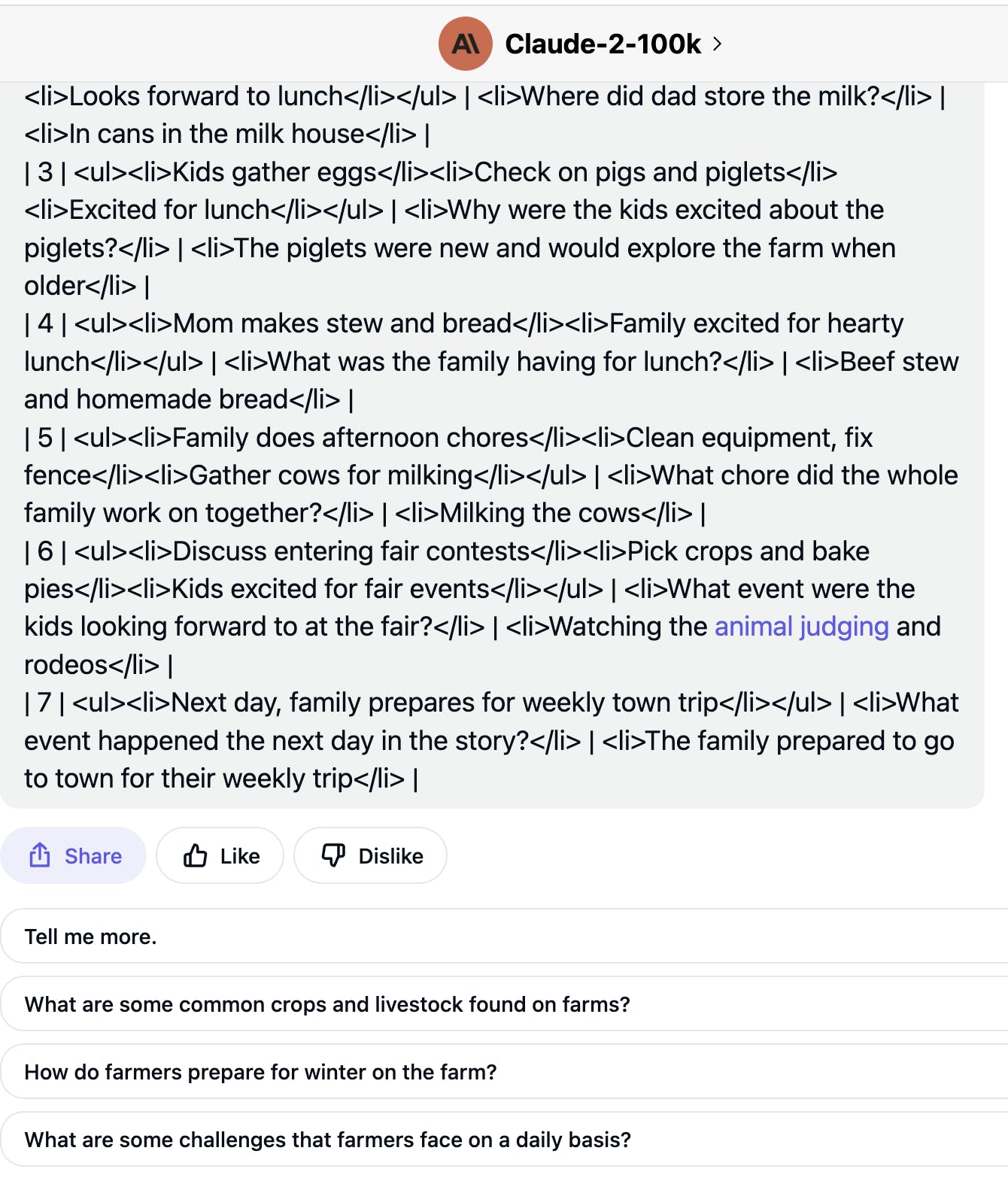
Writer's own (Tested using Claude-2-100K)
While Claude offers an easy way to upload a PDF that can then be summarized using a prompt, it should also be noted that ChatGPT-4 has a range of plugins via its ChatGPT Plus subscription that specialize in doing just that, as well as offering a huge amount of additional capabilities through its plugin store.
Claude 2 is still in beta but it looks like, unlike OpenAI’s GPT-4, it can’t search the web once its existing training set goes out of date.
Both chatbots are still highly susceptible to bias and hallucination, however, whereby AI will confidently generate false information, and both can not be used for professional advice, such as matters concerning medical, financial or legal issues.
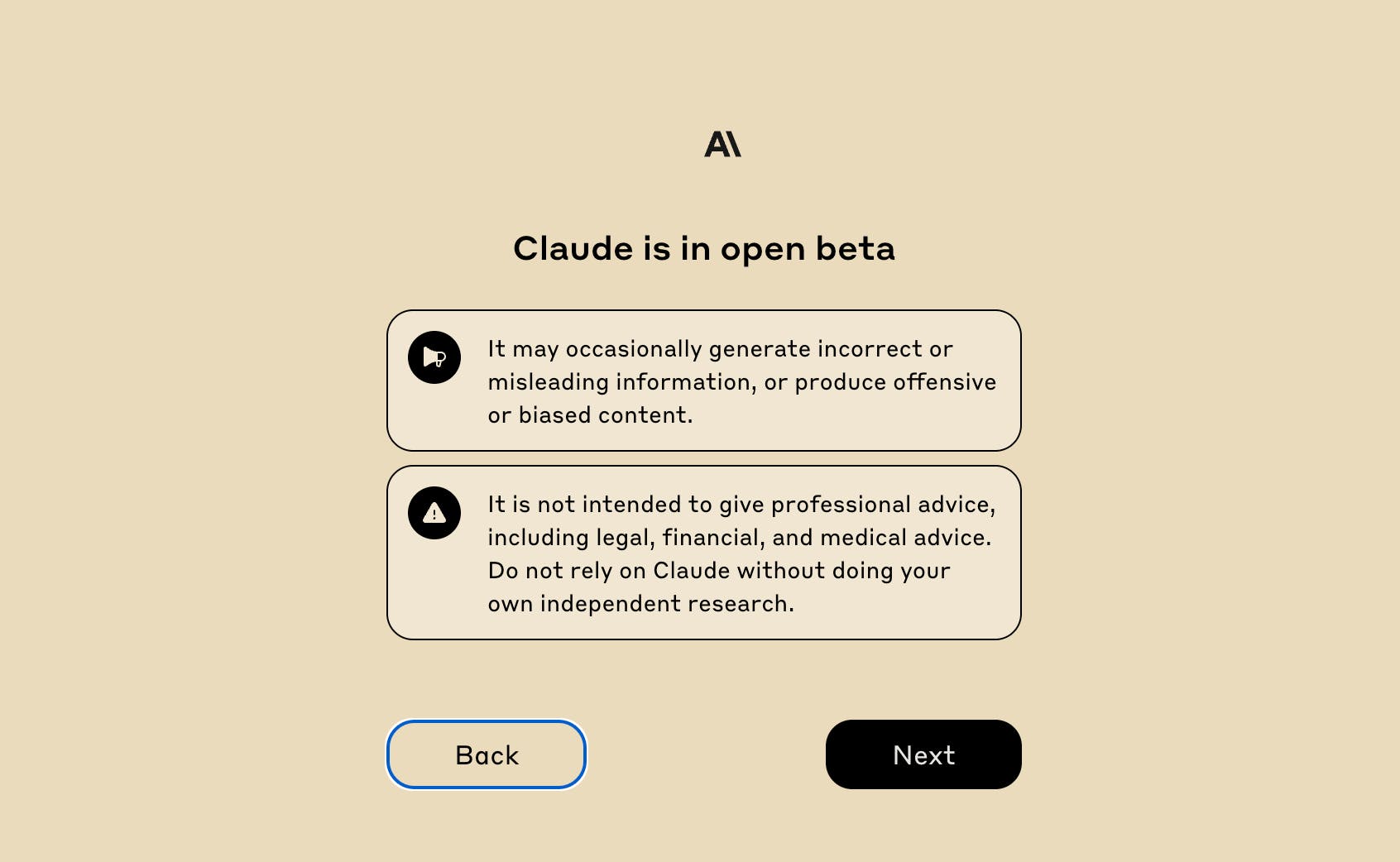
Claude
How to use Claude AI
Once you’ve logged in to Claude, you’ll be able to engage in conversation with the bot by using the ‘Start a new chat’ option on the chat window.
Alternatively, the platform also suggests three example uses from the outset you can click on to try the system out, that include the platform’s ability to summarize large documentation.
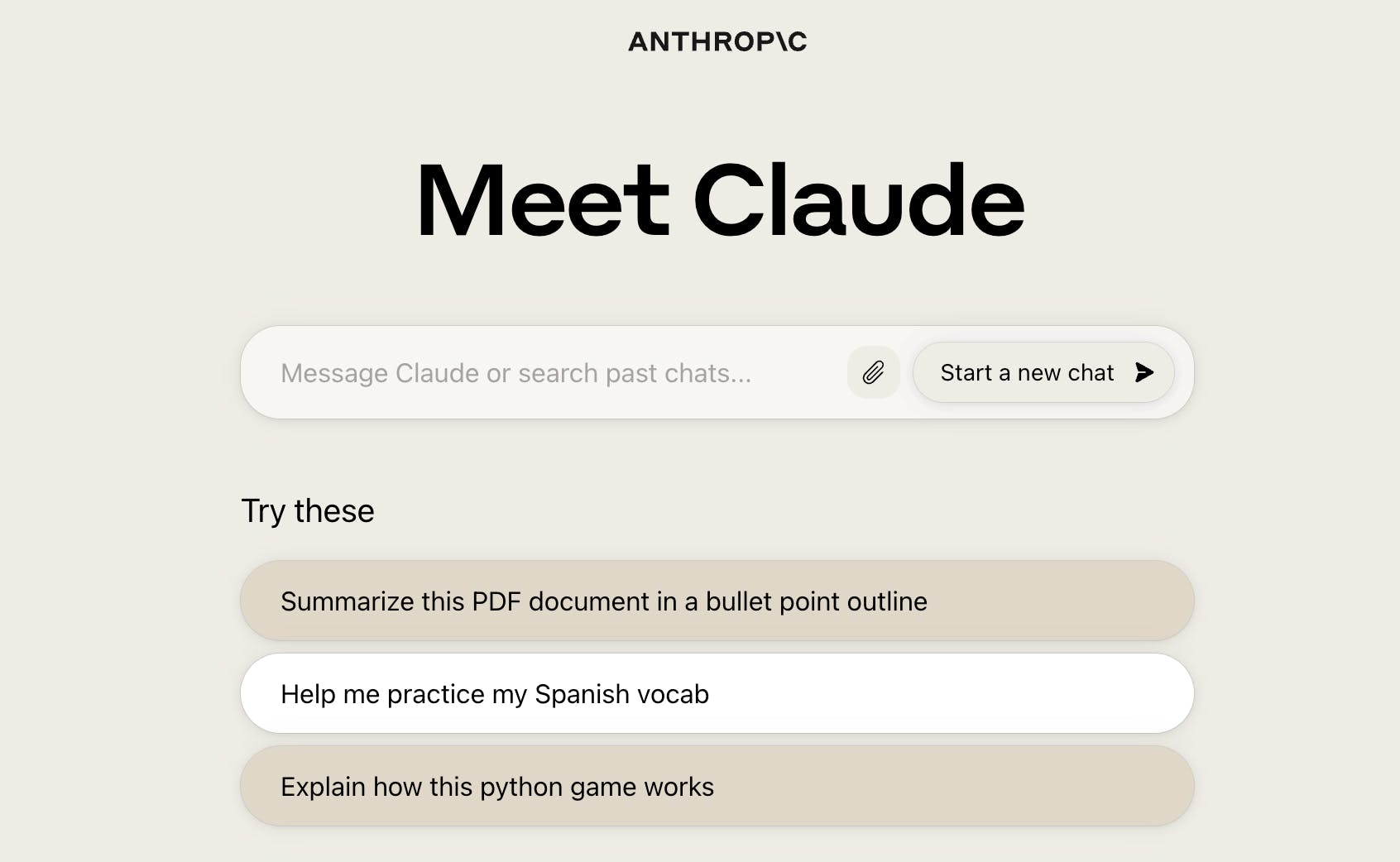
Claude
Claude is able to accept up to 5 files, up to 10MB each, including PDFs, txt and csv files that can be added using the paperclip icon before a prompt is entered.
Anthropic recommends speaking to Claude “like you would a coworker or friend” so is able to handle the typical question format that’s familiar to any user of a chatbot; writing a few sentences simply and clearly can be sufficient for getting the response you need.
However, if you’d like Claude to respond in a specific format or are interested in advanced prompt design, Anthropic recommends giving Claude as much context and detail as possible, as well as any rules for completing the task correctly.
It’s advised to use this format due to how the platform has been trained to identify who is speaking:
Human:
Assistant:
In addition, users are able to mark different parts of the prompt by using XML tags, as Claude has been fine tuned to pay special attention to this structure.
Tags like <text> and </text> can clearly mark the beginning and end of the text that Claude needs to de-identify.
Anthropic indicates the below as being a few well-constructed prompts you can try out:
Prompt example 1
Human: We want to de-identify some text by removing all personally identifiable information from this text so that it can be shared safely with external contractors. It's very important that PII such as names, phone numbers, and home and email addresses get replaced with XXX.
Here is the text, inside <text></text> XML tags. <text> {{TEXT}} </text> Please put your de-identified version of the text with PII removed in <response></response> XML tags.
Assistant:
Prompt example 2
Human: Here is an article, contained in <article> tags: <article> {{ARTICLE}} </article>
Please identify any grammatical errors in the article that are missing from the following list: <list> 1. There is a missing fullstop in the first sentence. 2. The word "their" is misspelled as "they're" in the third sentence. </list>
If there are no errors in the article that are missing from the list, say "There are no additional errors."
Assistant:
If you'd like to find out more about how to explore Claude 2 in greater depth visit Anthropic's guides.
Comments (14)
Umar Arshad@umar_arshad

Notion Site
here is some more useful information regarding claude https://chatgptaihub.com/how-to-...
Share
@umar_arshad In addition, the platform offers three pre-suggested uses that you can click on to test the system out. One of these uses is its capacity to condense lengthy documentation. See: Bradford residential spray foam
In what responsible safe zones did the hacker attacks show the weakness of the systems, https://orbitaltoday.com/2023/09/07/hackers-attack-and-shutdown-two-major-telescopes/? This year, the replacement of old security technological systems with new ones occurs, and this period is risky to new attacks.
It gave best information. I used it for content creation on my schwarzkümmelöl website.
Fingers-crossed this comes to Canada soon! 🤞🇨🇦
@matthew_ritchie Just use https://poe.com/Claude-2-100k or any VPN to access it. Don't wait.
More stories

Sanjana Friedman · News · 10 min read
How to Ace a Product Demo

Lenny Rachitsky · How To · 15 min read
The ultimate guide to willingness-to-pay

Mathew Hardy · How To · 3 min read
How to Detect AI Content with Keystroke Tracking

Sanjana Friedman · Opinions · 9 min read
The Case for Supabase

Vaibhav Gupta · Opinions · 10 min read
3.5 Years, 12 Hard Pivots, Still Not Dead

